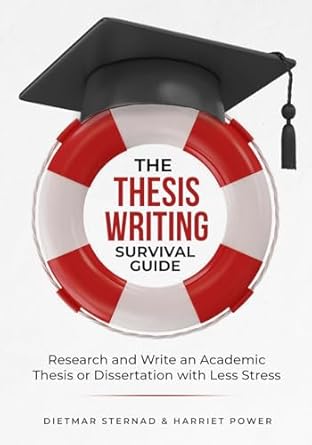The thesis defense stands as the final, formal conversation in a long academic journey. It is a unique scholarly ritual, a dialogue that can seem shrouded in mystery for those approaching it for the first time. Beyond the specific content of the dissertation, however, exists a common architecture of inquiry. The questions, while unique in their specifics, often follow predictable patterns designed to probe the depth, rigor, and significance of the research.
Distinguishing the Present Research from Preceding Studies
A common and pivotal line of inquiry during the defense centers on establishing the unique position of the work within the existing body of literature. The question, "How does your research differ from previous studies?" requires a response that moves beyond a simple recitation of the literature review. A sophisticated answer delineates the specific niche the current work occupies. This might involve employing a novel theoretical lens to re-examine a well-established phenomenon, investigating a previously overlooked variable within a known model, or applying a established methodology to an entirely new context or population. The objective is to articulate a clear lineage from prior research while simultaneously carving out a distinct and justified space for the new contribution, thereby demonstrating that the study is not merely duplicative but purposefully additive.
Articulating the Scholarly Contribution of the Research
This question probes the very heart of the dissertation's raison d'être. "What is the contribution of your research to your field?" demands a response that is both precise and significant. The contribution can be theorized on several levels. It may be theoretical, offering a new conceptual framework, refining an existing model, or challenging a long-held assumption. Alternatively, it may be empirical, providing robust, novel data that fills a recognized gap or offers a fresh evidentiary base for ongoing debates. For applied disciplines, the contribution could be practical or methodological, proposing a new tool, technique, or actionable insight for practitioners. A compelling articulation directly states the nature of this contribution and explains why it matters for the advancement of the discipline.
Identifying and Addressing Research Gaps
The identification of research gaps is the foundational logic upon which a thesis is built. When asked, "What specific gaps did you identify?" the response must be authoritative and specific. A strong answer moves beyond vague statements like "little research has been done" to pinpoint precise, justified shortcomings in the existing literature. These gaps could be conceptual (e.g., a lack of theoretical understanding about a specific mechanism), methodological (e.g., a reliance on self-report data where observational data is needed), or demographic (e.g., a phenomenon studied only in Western contexts). The narrative should clearly connect these identified gaps to the specific research questions formulated, demonstrating a logical and critical engagement with the scholarly conversation.
The Analytical Journey: From Raw Data to Findings
This question delves into the operational core of the research process: "How was the data analyzed?" A robust response requires more than just naming the analytical technique (e.g., "I used thematic analysis" or "I ran a regression"). It involves narrating the process. For qualitative research, this might describe the progression from initial coding and categorization to the development of overarching themes, perhaps mentioning the use of specific software or techniques to ensure rigor. For quantitative work, it would detail the steps taken, from data cleaning and preparation to the selection and justification of specific statistical tests, and the interpretation of their outputs. This narrative demystifies the path from collected data to synthesized findings, showcasing methodological literacy and systematic rigor.
Situating the Findings within the Previously-publised Studies
This final question synthesizes the entire research endeavor: "How do your findings converse with the existing literature?" The answer must avoid a simplistic binary of "agreeing" or "disagreeing" with previous studies. Instead, it should paint a nuanced picture. The findings may confirm and extend prior work, adding deeper layers of understanding. They may complicate existing theories, revealing boundary conditions or unexpected moderating variables. They might also directly contradict established findings, for which a compelling explanation must be offered (e.g., differences in context, methodology, or sample). Ultimately, this narrative positions the research as an active and constructive participant in an ongoing academic dialogue, showing how it reinforces, refines, or redirects the current state of knowledge.
The selection of Research Title (Rationale)
It reflects the core issue being investigated and was selected after a thorough review of existing literature and gaps in the field. The title encapsulates the scope and direction of the research, making it both specific and engaging. It serves not only as a label but also as a guiding framework that shaped the formulation of research questions, methodology, and analysis. By choosing this title, the researcher signals a commitment to addressing a meaningful problem with academic and practical significance.
The Validity and Reliability of the Research Instruments and Procedures
To establish validity, the instruments were reviewed by subject matter experts and aligned with theoretical constructs relevant to the research. Reliability was tested through pilot studies and statistical measures such as Cronbach’s alpha, ensuring consistency in data collection. The methodology was designed to minimize bias and maximize accuracy, with clear operational definitions and standardized procedures. These steps were crucial to ensure that the findings are trustworthy and can be replicated or built upon by future researchers.
Practical Suggestions for Further Researchers Who Wish to Explore Related Topics
Based on the limitations encountered and the findings obtained, several avenues for further investigation are proposed. These include expanding the sample size, exploring different contexts or populations, and applying alternative methodologies. The recommendations are grounded in the realities of the research process and aim to help others refine, challenge, or extend the current study. By offering these suggestions, the researcher contributes to the ongoing dialogue in the field and encourages continuous improvement and innovation.




